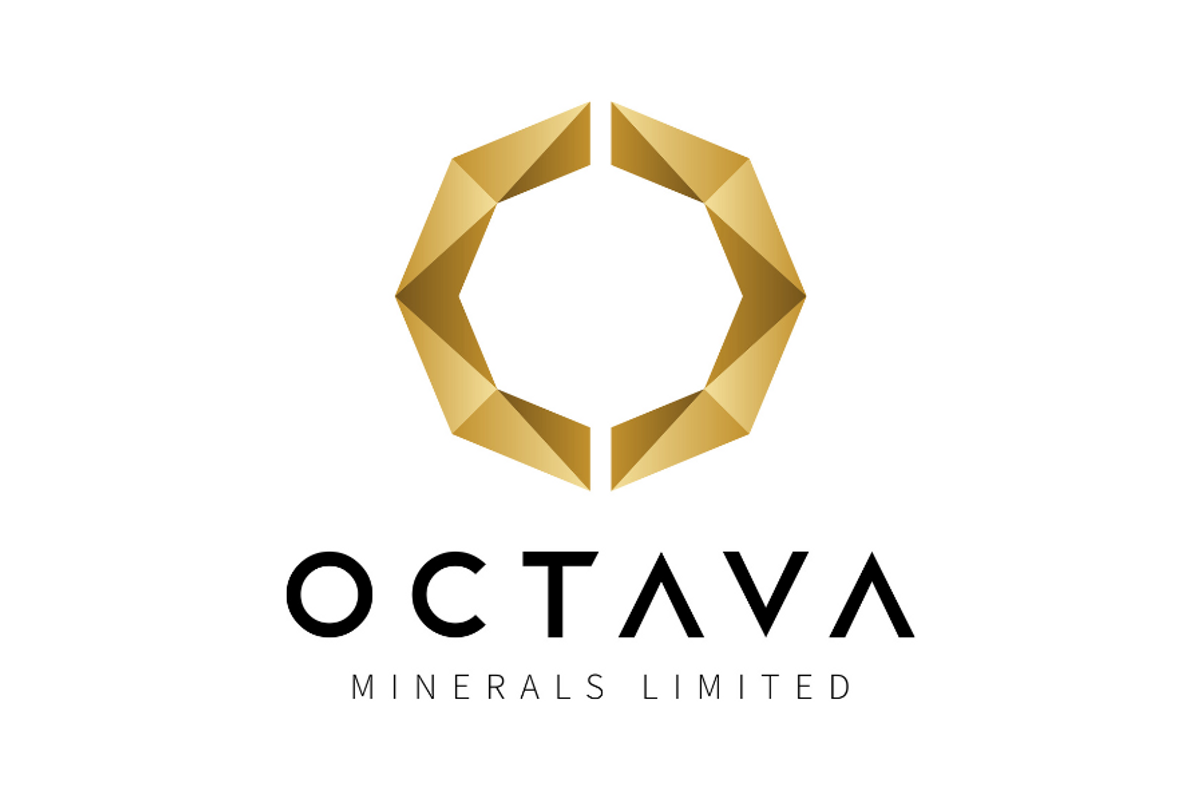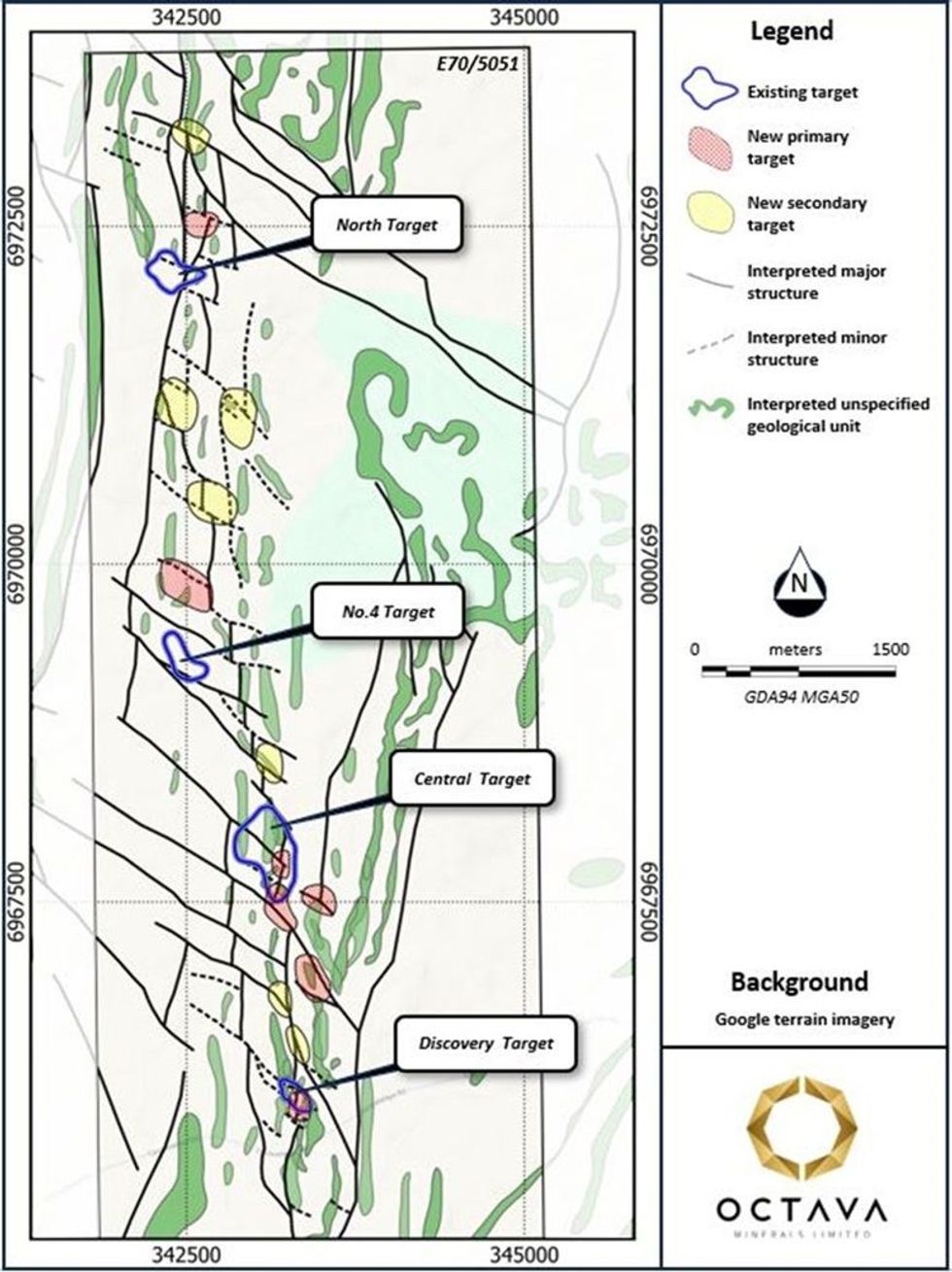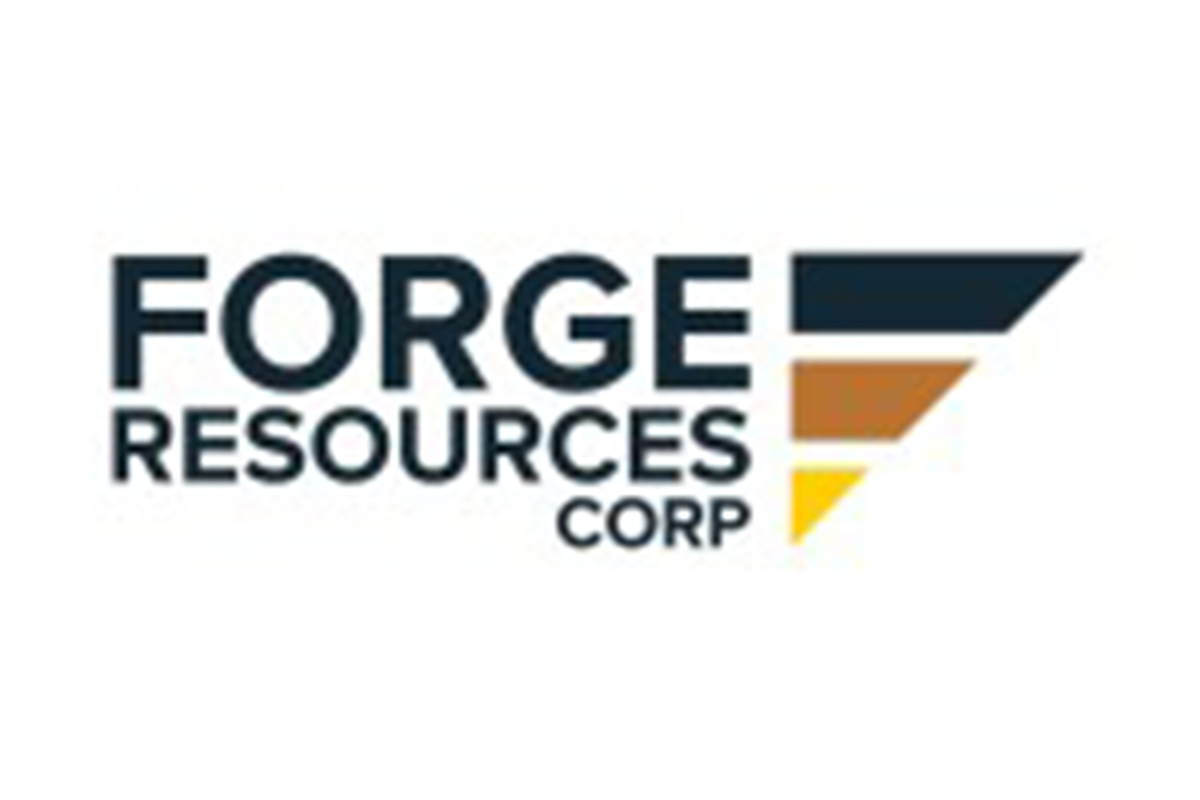
December 11, 2024
Octava Minerals Limited (ASX:OCT) (“Octava” or the “Company”), a Western Australia focused explorer of the new energy metals antimony, REE’s, Lithium and gold, is pleased to report that detailed geophysics over the 10km antimony corridor at Yallalong is now complete and final data has been processed and interpreted.
Highlights
- Ground geophysical survey over the identified 10km antimony corridor at Yallalong is complete and final data has been processed and interpreted.
- Detailed interpretation of the geophysical data integrated with previous drilling data significantly expands the scale of the exploration model for high-grade antimony mineralisation at Yallalong.
- 14 new, high priority, structural targets analogous to the high-grade Discovery Target have been identified and will be evaluated in the next drilling campaign.
The geophysics has identified 14 new structural antimony targets at Yallalong analogous to the Discovery Target, where historic drilling intercepted high-grade antimony.
Octava’s Managing Director Bevan Wakelam stated, "The new gravity data redefines the exploration model for high grade antimony at Yallalong. It explains the presence of anomalous antimony along the structural corridor and predicts potential hot spots along it. It is exciting to consider the possibility of a continuous system extending under cover for more than 10 kilometers and having a method to pinpoint the most prospective zones. Planning work is already underway for drilling of these new targets "
Antimony
The Yallalong project is located ~ 220km to the northeast of the port town of Geraldton in Western Australia. The antimony (Sb) mineralisation identified at Yallalong appears within a 10km north- south striking mineralised corridor.
Previous exploration identified four principal antimony targets where antimony mineralisation was exposed at surface. Only the Discovery Prospect had previous drilling and recorded high-grade antimony intercepts over a strike length of ~300m, including 7m @ 3.27% Sb.
A detailed geophysical survey was undertaken to identify underlying structures, such as shears and faults, which act as conduits to mineralising fluids. It also outlines key lithological boundaries. These factors are important in the formation of antimony deposits worldwide.
Interpretation of the geophysical data and the historic drilling has re-defined the exploration model for high grade antimony at Yallalong. Fourteen new targets analogous to the Discovery Target have been identified and will be evaluated through planned drilling. See Figure 1.

Atlas Geophysics conducted the gravity survey using a 100m x 100m grid pattern, with additional measurements on a 50m x 50m grid over the Discovery Target. NewGen Geo, a geophysical consultancy, carried out the gravity data processing and interpretation.
Click here for the full ASX Release
This article includes content from Octava Minerals Limited, licensed for the purpose of publishing on Investing News Australia. This article does not constitute financial product advice. It is your responsibility to perform proper due diligence before acting upon any information provided here. Please refer to our full disclaimer here.
The Conversation (0)
11h
Walker Lane Announces Shares for Debt Issuance
TSX-V: WLR Frankfurt: 6YL CMC Metals Ltd. (TSXV: CMB) (Frankfurt: ZM5P) ("CMC" or the "Company") is pleased to announce that it has settled and extinguished $77,600 of outstanding debt (the "Debt") through the issuance of common shares of the Company (the "Shares"). In accordance with the... Keep Reading...
19h
Forge Resources Intersects 3.4 g/t Gold over 44.75 Metres, and 800 Metre Step-Out Discovers 1.04 g/t Gold over 55.52 Metres at Alotta, Yukon
Forge Resources Corp. (CSE: FRG) (OTCQB: FRGGF) (FSE: 5YZ) ("FRG" or the "Company"), is pleased to announce full gold assay results from drill hole ALT-25-012 at the Payoff Zone intersecting 3.4 g/t gold over 44.75 metres from 256.23 metres and discovery results from hole ALT-25-013 at the... Keep Reading...
20h
Gareth Soloway: Gold, Silver, Bitcoin and More — Price Predictions for 2026
Gareth Soloway of VerifiedInvesting.com shares his outlook for gold, silver and Bitcoin.For gold, he outlines two different scenarios — a breakout to US$5,000 per ounce, potentially early in 2026, or a pullback to the US$3,500 to US$3,600 level. Don’t forget to follow us @INN_Resource for... Keep Reading...
16 December
CMOC to Acquire Equinox Gold’s Brazilian Assets for US$1.015 Billion
China’s CMOC Group (OTC Pink:CMCLF) has agreed to buy a portfolio of gold assets in Brazil from Canada’s Equinox Gold (TSX:EQX,NYSEAMERICAN:EQX) for US$1.015 billion.CMOC said Monday (December 15) that it will acquire 100 percent of Equinox Gold’s Brazilian operations, comprising the Aurizona... Keep Reading...
16 December
Brixton Metals Reports the Balance of its 2025 Drill Results at the Trapper Gold Target
Brixton Metals Corporation (TSX-V: BBB, OTCQB: BBBXF) (the " Company " or " Brixton ") is pleased to announce updated and complete assay results from the Trapper Gold Target at its wholly owned Thorn Project in northwestern British Columbia. This release includes multi-element results for all... Keep Reading...
16 December
Walker Lane Announces Board Update
TSX-V: WLR Frankfurt: 6YL Walker Lane Resources Ltd. (TSXV: WLR,OTC:CMCXF) (Frankfurt: 6YL) "Walker Lane") announces the resignation of John Land as a Director of the Company and the appointment of Mr. Kevin Brewer, Director and CEO as interim Chairman of the Board. The Board wishes to thank Mr.... Keep Reading...
Latest News
Latest Press Releases
Related News
TOP STOCKS
American Battery4.030.24
Aion Therapeutic0.10-0.01
Cybin Corp2.140.00




